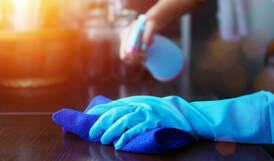 Despite the rise in real-time, tech-based controls designed to help businesses monitor foodborne illness risks, outbreaks continue to be an issue for foodservice operations. The CDC recorded 519 norovirus outbreaks between August 2023 and January of this year, a sharp rise from the previous year’s numbers, and Salmonella has impacted people across 32 states in recent months. On top of food safety technology that helps foodservice operations monitor protocols and stay alert to problems, old-fashioned food safety practices are just as important. A Food Safety Tech report says this should include thorough, frequent handwashing; proper hand hygiene prior to handling food; and the use of alcohol-based sanitizer as an added precaution – not a substitute – for handwashing. It’s also important to clean and sanitize high-touch surfaces and equipment regularly – and wash and sanitize produce to eliminate contaminants (the recent Salmonella outbreak was linked to cantaloupe and pre-cut fruit products). The report also advises careful handling and proper cooking of seafood, particularly shellfish, and having an employee policy with clear guidelines for managing staff illness, especially regarding when it’s important to avoid handling food or reporting to work.  Root vegetable season is here – and while the colors, flavors and nutrient content of this produce can elevate your fall and winter menus, these items also require some extra care to protect food safety. Most of the bacteria on produce comes from the soil that remains on their surface, so root vegetables need attention here. Even if you will be peeling and cooking these items, they need to be cleaned thoroughly first. Shortly before preparing root vegetables, remove any soil, then scrub them with fresh water to dislodge pathogens that may have accumulated in the vegetable’s crevices. You may want to use an additional cleaning solution for vegetables as an extra precaution. 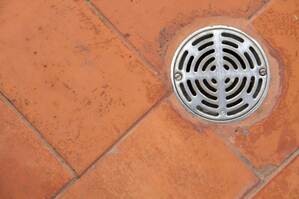 Restaurants are having to juggle tasks with smaller crews, so it might be easier to overlook tasks that aren’t exactly urgent but can still pose problems when not completed promptly. One example of this is the residue that can build up on your equipment – slime that accumulates on soda fountain nozzles and ice bins, grease in grease traps, and food particles that aren’t swept up can contaminate food, create fire hazards and attract pests. Are there areas of your operation that aren’t getting cleaned as well as they could? If so, make sure everyone is clear about how to complete these tasks – if they are on your schedule but not being completed effectively, some training may help. 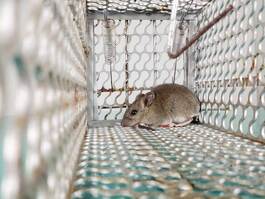 Before cooler temperatures encourage rodents and other pests to seek shelter in your restaurant kitchen, your staff can help you make your business a less hospitable place for them. Consider the perimeter of your property: Beyond repair work being done on your building to seal cracks and close other potential entry points, incentivize your waitstaff to keep pests at bay. They can be your eyes and ears around your restaurant, ensuring your outdoor seating areas are cleaned regularly, clearing finished dishes and cutlery promptly, wiping up spills, and identifying possible infestations for you before they become larger problems.  Your cutting boards can be sources of contamination if they’re not cleaned and sanitized thoroughly – and according to the material they are made from. Broadly, you need to ensure the boards are scraped free of food particles, washed with warm, soapy water, rinsed, sanitized and then dried – either with a clean cloth or air-dried. The sanitizing step differs by the material of your board. For glass, plastic and stainless steel boards, State Food Safety advises sanitizing in the dishwasher or with an FDA-approved sanitizer for food contact surfaces. Marble boards should be sanitized by hand in a chlorine solution, while wooden boards are best sanitized in a quaternary ammonium-based sanitizer. 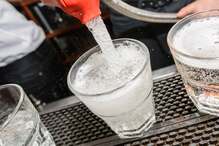 Your soft drinks may be in even greater demand than your food options on hot summer days. But a less-than-clean soda fountain can be an immediate turn-off for guests (not to mention a safety hazard). It’s easy for mildew to collect around soda fountain spouts that aren’t cleaned regularly. What’s more, if you’re allowing guests to serve drinks themselves in an effort to save labor, your staff will need to take care to inspect and clean these machines more often. Do your safety checks ensure that your machines are cleaned in the appropriate ways – and at the right intervals – so they’re serving up a clean pour? 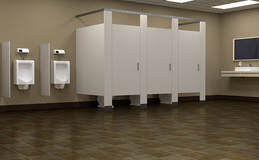 The first stop for your safety inspector is often the place you don’t want associated with your kitchen in any way: your bathroom. Dirty, littered bathrooms are a major red flag for inspectors – and guests too. If you’re not taking care to tidy these visible areas, why should people trust that you’re adhering to safety and hygiene standards in your kitchen? Indeed, in an interview with Mashed, Angela Anandappa, the founding executive director of the nonprofit Alliance for Advanced Sanitation, advises guests to check out a restaurant’s restrooms before they sit down to their meal – and make an educated guess about its food safety based on that experience. If you’re slipping in this area, ensure that your staff check and clean your restrooms at more frequent intervals. Digital tools can help you stay on schedule and identify when problems tend to arise during shifts. 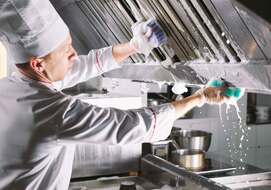 Even if you are diligent about keeping work surfaces clean and mopping up spills as soon as they happen, you may still be overlooking one area in your restaurant that can be a major source of safety and hygiene risks. As a recent report in Modern Restaurant Management indicates, nearly one-third of restaurant fires happen due to the buildup of grease in the kitchen hood. Fire hazards aside, when the hood isn’t properly maintained, grease can accumulate on other parts of the kitchen, bacteria and bad odors can multiply, air quality worsens, and there is a greater strain on equipment, which can lead to equipment malfunction and higher energy bills. (The kitchen hood is a major energy drain for restaurants – and an appliance commonly updated with more sustainable options as a result.) To manage the risks, keep up with professional cleaning and inspections per manufacturer’s guidance and in accordance with what foods and quantities of it are cooked there.  A recent Food Safety Magazine report encourages organizations to think of sanitation as resting on a three-legged stool. People, training programs, and hygienic design and maintenance represent the three legs – and when one or more legs is compromised, it brings down the others. If you have a safety failure, scrutinize each of these legs of the stool to find the root cause. Do you have sufficient people on hand to complete the tasks required? Do they understand what they need to accomplish and when? Is your equipment able to be cleaned easily and does your staff have the appropriate tools and cleaning materials they need? You may see patterns emerging that can help you zero in on your biggest risks. 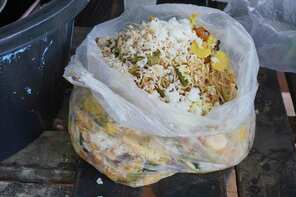 Your waste management efforts can go a long way in not only saving money, but also deterring insects and other pests to your kitchen. Are there steps you can take now to ensure you’re minimizing any food byproducts that are collected in your kitchen and must be discarded each day? Before the hot temperatures hit this summer, give your indoor and outdoor waste receptacles a deep clean — along with the surrounding areas — to clear any debris or liquid that may have leaked out. |
subscribe to our newsletterArchives
July 2024
Categories
All
|
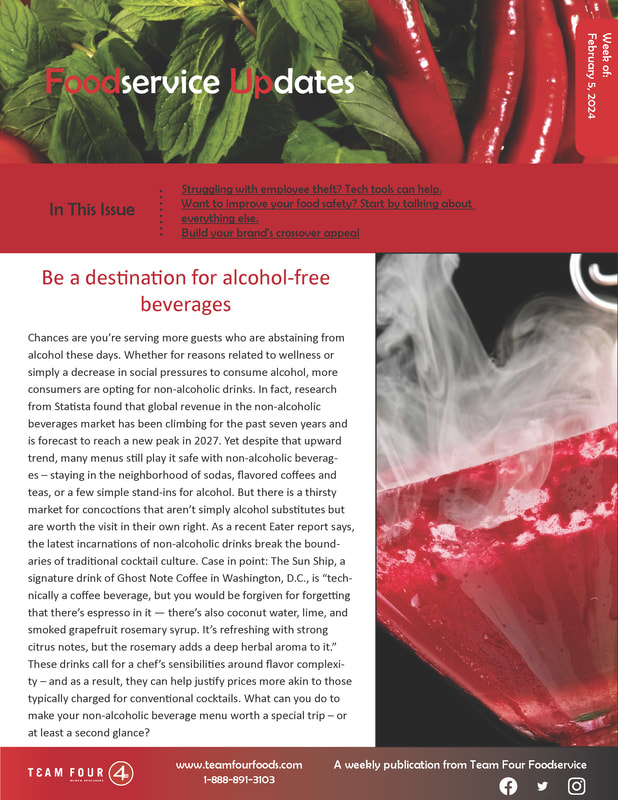
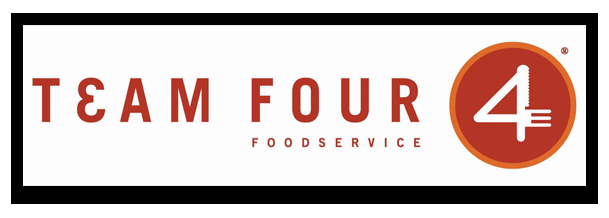
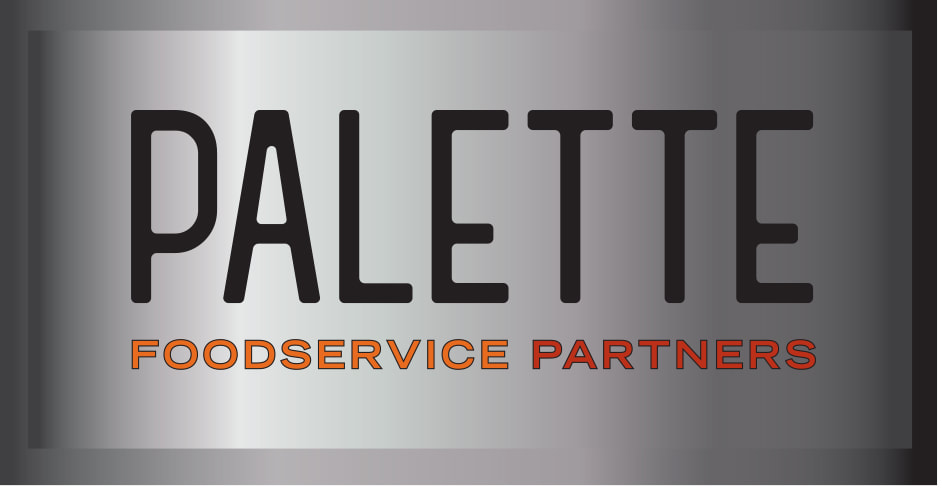
 RSS Feed
RSS Feed